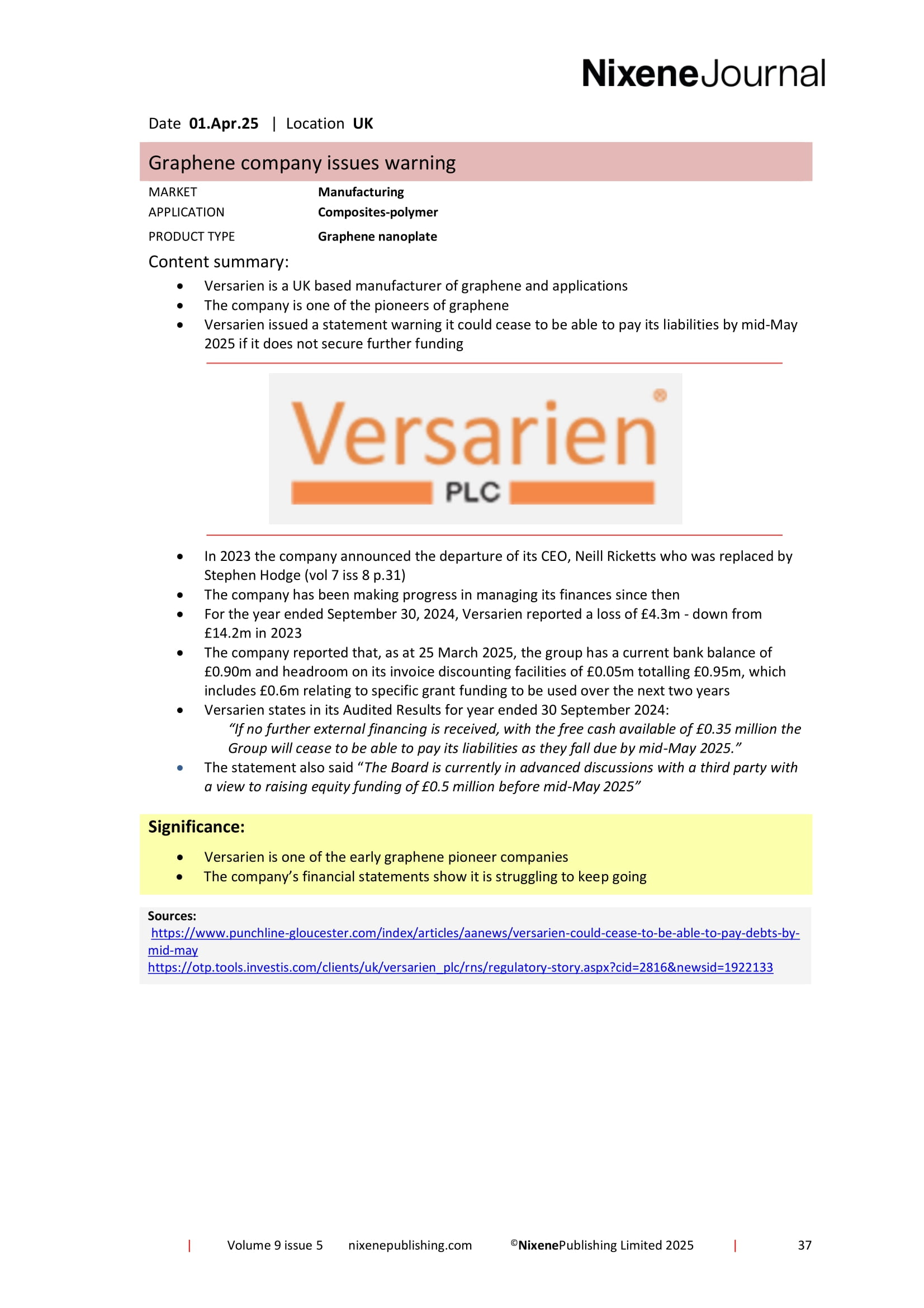Journals
This product is relevant to the following:
Material:
Other:
, ,Locations:
Markets:
Applications:
Product Types:
Technologies:
Related products
-
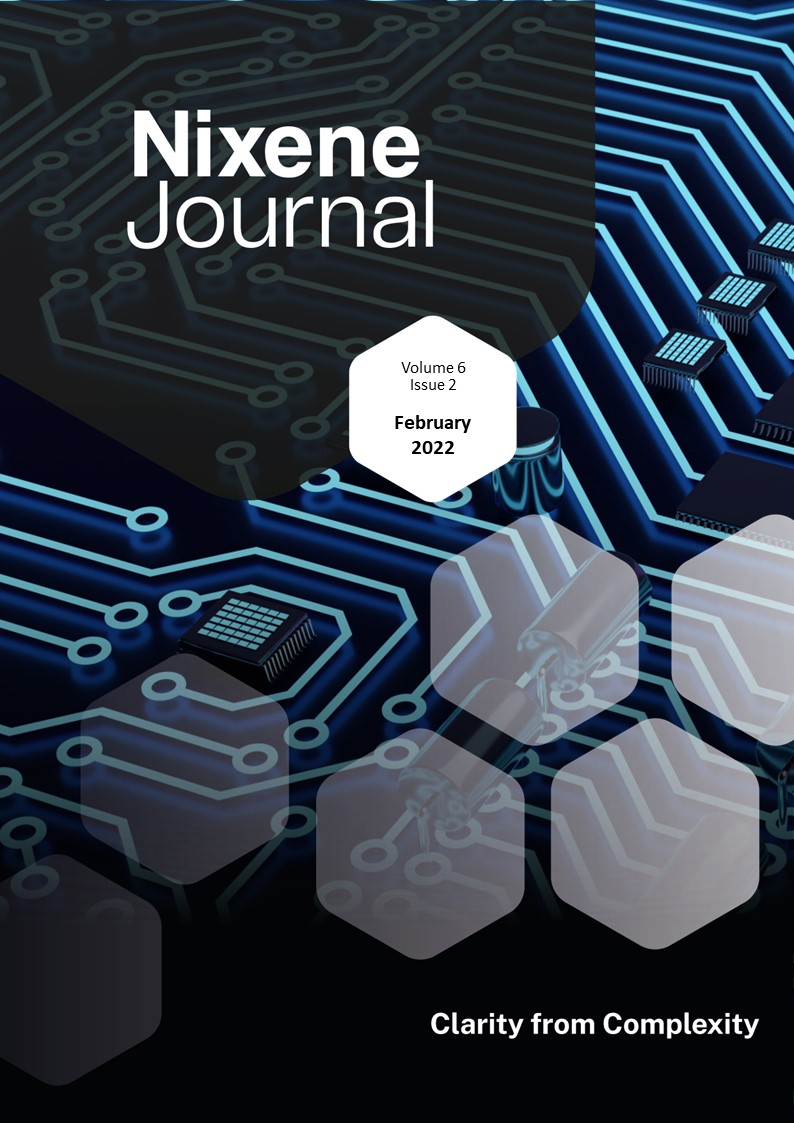
Vol 6 Issue 2
A graphene toaster was demonstrated for the first time at the consumer electronics show in Las Vegas by Korean company Graphene Square. This may not sound like a world changing invention, but it is something worth paying attention to because this is a rare application for chemical vapour deposition (CVD) graphene in a consumer electronics device. Until now, CVD graphene has been used in very small pieces in sensors. This toaster has a piece of CVD graphene on the top and bottom glass panels making a transparent infrared grill. The graphene is made at a scale of 200mm x 150mm and this tells us a that the company has a viable CVD roll to roll process. The process can make graphene at this scale and also provides the capability to separate the graphene from the forming substrate to other surfaces, in this case glass. The next step is to do this commercially. Graphene Square admits this is still at least a year away. This is still impressive progress and tells us that the industrial manufacture of CVD graphene is developing quickly. CVD graphene is also in the news this month. British company Paragraf announced through Queen Mary University, London, that they can create graphene at wafer scale, and this could be a replacement for indium tin oxide (ITO). This was picked up by technology blogs around the world, and graphene manufacturer Versarien felt obliged to disclose it is working on a similar project with a graphene manufacturer in Korea. These announcements about CVD graphene touchscreens sound impressive. However, as far as we can tell from the current state of the art, the economic and technical cases are not sufficiently proven to convince us we will see this technology in the immediate future. The term ‘bottom-up graphene’ used to refer to CVD graphene assembled atom by atom. Graphene powder manufacturing has been evolving rapidly over the last few years and can now be made by atomic assembly methods too. We have summarised the various methods in our special feature. We also look at the implications for competitive activity, as these new manufacturing methods meet the new market dynamics driving the sustainability agenda. While we cannot state which individual companies will achieve success, we can make some predictions about the characteristics successful graphene powder manufacturers will need to have. We hope you agree this makes for fascinating reading along with the rest of the compelling content this issue. Adrian Nixon, 1st February 2022£45.00 View product -
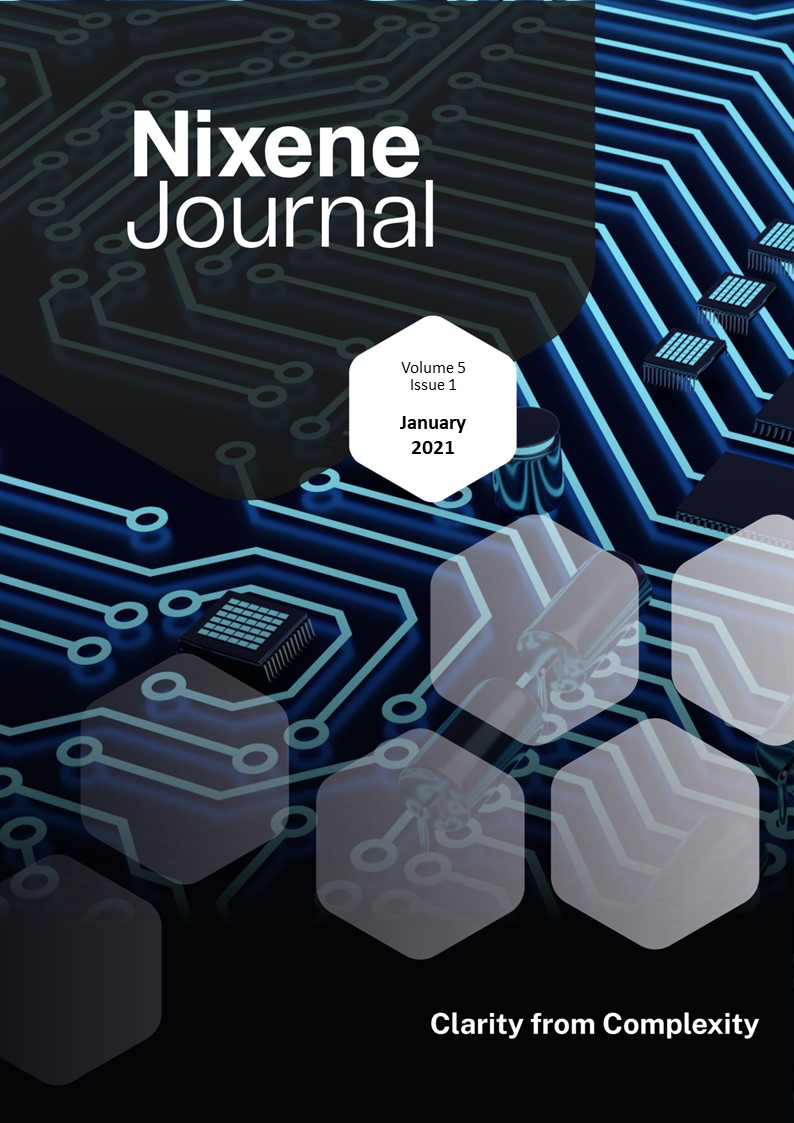
Vol 5 Issue 1
In a previous life I led the market intelligence gathering and analysis for a large international company. I discovered that a good way to find out what the competition and customer organisations would do in the future was to look at the influence the corporate leader had on his or her company. Two new top appointments have been announced this month. First Graphene has a new Chief Executive Officer (CEO) with sales, marketing and growth expertise. Zen has a new CEO and also a Chairman, with skills acquired in financial management and investor relations. It will be interesting to observe the corporate behaviour of these two companies over the coming years. If the skills set of the leadership is a guide then we can expect that by this time next year First Graphene will generate its income from increased sales in diverse markets through organic growth and Zen will have raised more money from a variety of institutional sources focussed on their anti-viral graphene. We’ll watch both companies with interest. Graphene is still throwing up surprises in fundamental science: Andre Geim’s team at the University of Manchester continues to create high quality research. The latest paper in nature explores the way water condenses to a liquid from a vapour inside nanocapillaries made in two dimensional materials. The team showed that as the humidity rises to 80% water suddenly condenses out as a liquid and fills the nanocapillaries. This work may also mean that other graphene surfaces could be affected in a similar way by high levels of humidity suddenly transitioning to a liquid coating. Designers of graphene sensors for the internet of things may want to bear this in mind. A team at Princeton University in the USA has been exploring the source of superconductivity in twisted bilayer graphene. They found topological quantum states were created by the magic angle twist which forces the electrons to be at the same energy (a flat band). This creates regions that have electrically insulating interiors but the edges allow electrons to flow freely even if there are imperfections present in the material. At low temperatures and mild magnetic fields, the edges form stable superconducting channels throughout the material. These topological quantum states were a surprise discovery and will keep researchers busy for some time to come. And another team in China has created a new method for making graphene from waste plastic using microwave sintering. This shows that graphene will spontaneously form when carbon atoms are ripped apart and allowed to reform in the absence of oxygen. It looks like we will not run out of graphene supplies any time soon. Further fascination can be found in Rob Whieldon’s special feature. Rob has analysed the market keywords we use to tag all the applications of graphene since we started in 2017. His feature is a must-read in this issue. Adrian Nixon, 4th January 2021£45.00 View product -
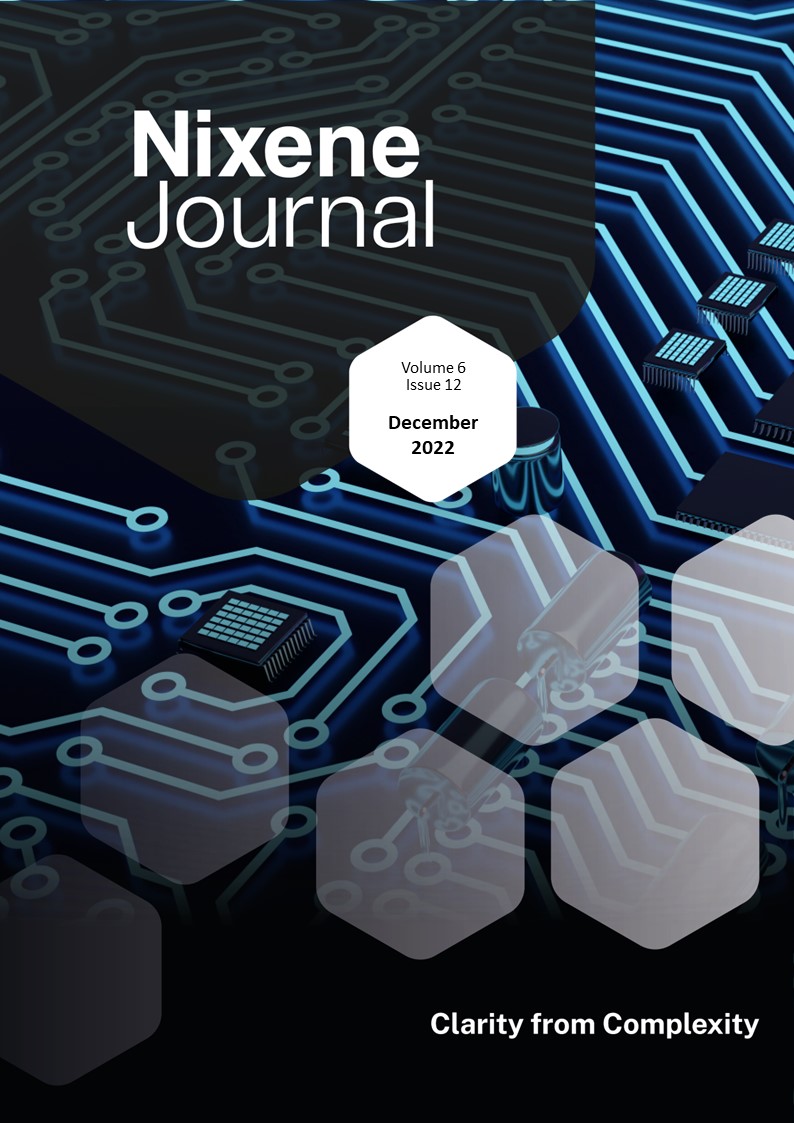
Vol 6 Issue 12
This month Time Magazine named the graphene kitchen styler as one of the best inventions of 2022. This is the graphene cooker we mentioned back in vol 6 iss 2 p.30. The company behind this invention, Graphene Square, announced another product this month, the graphene virtual fireplace radiator. Both devices use large area chemical vapour deposition (CVD) graphene. The virtual fireplace radiator has already won another innovation award and will make its debut at the consumer electronics show in Los Angeles, USA in January 2023. The immediate reaction from people working in the graphene and 2D materials community has been to greet these announcements with a wry smile. My first reaction was to dismiss this as gimmickry as well. Then I thought a little more. You will know, dear reader, that great advances have been made developing manufacturing methods for large area sheet graphene using the CVD technique. Production machines exist in Europe, America, and Asia, some of which can make graphene at speeds of 2m/min and lengths of up to one kilometre (vol 5 iss 8 p.36). A manufacturing business survives by making things and then selling them at a profit. These companies have solved the science and engineering problems to create impressive production capabilities. This is only half of the survival equation. They must develop equally impressive marketing and sales operations to match. In this issue we notice that USA based manufacturer General Graphene is still struggling to find the applications that will be the foundation for the marketing and sales operation. Meanwhile Graphene Square, from South Korea is making cookers and toasters. The reason they are launching apparently trivial products is because they need to educate the market by getting the message out to potential customers that CVD graphene is real, it can be manufactured at scale and integrated into everyday products. This message will not be lost on manufactures in the automotive and aerospace sectors as well as consumer electronics. And consider this, Time Magazine has over three million subscribers, and a wider reach online. Also in this issue, graphene powder manufacturer, Applied Graphene Materials has announced it is in financial trouble. It will run out of cash at the end of January 2023 unless it can find cash from somewhere. The reason for its troubles? A lack of success finding market applications for its graphene that will generate profitable sales. A reminder to us all that developing sophisticated products is only part of the road to success. Making customers aware of the value of your product is key because if you get this right, they will prize your offering as much as you do, and this will lead to profitable sales and a sustainable business. Adrian Nixon 1st December 2022£45.00 View product -
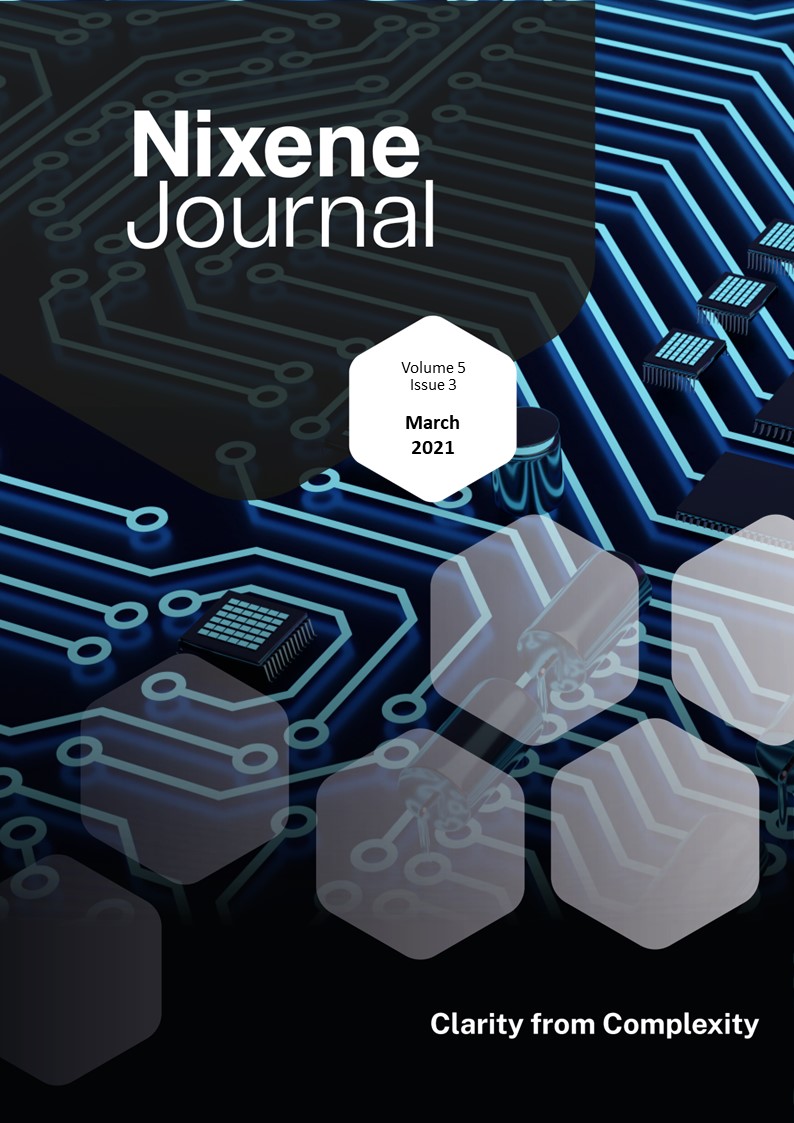
Vol 5 Issue 3
Graphene and 2D materials are still creating scientific progress and the pace is if anything speeding up. You may recall from 2018 that MIT discovered twisted bilayer graphene displayed superconductivity. Andre Geim said this was a genuine surprise when we interviewed him at the Graphene industry showcase event (Vol 4 Iss1 p.8). Well, the MIT team have been exploring this field of twistronics and have now found that using trilayer twisted graphene creates more robust superconductivity at slightly higher temperatures. This points the researchers towards more layers of graphene. Maybe people will start to realise multilayer sheet graphene is much more than graphite. In another development, liquid mercury has been turned into a solid by graphene and the resulting composite has promise for making a new generation of catalysts that could replace more expensive noble metals such as platinum and gold. This finding might also create the possibility to remove liquid mercury contamination from oil and gas processing. Sparc technologies in Australia has some profile this month. They have developed a functionalised graphene with the University of Adelaide. This is showing promise for land remediation and also early work is showing it has some value adsorbing precious metals from mining waste. Sustainability applications like these attract our attention, especially if followed by commercial success. Swedish company 2D fab is working on a project with Swedish research institutes to commercialise a new process for making hydrogen peroxide (H2O2) using graphene paper electrodes. H2O2 is an important industrial product used for bleaching and is an important ingredient in many consumer products. The current process for making H2O2 is energy intensive and creates waste. This new process promises to be lower energy without waste and is more environmentally sustainable. The project should complete by April 2023. Keeping the sustainability theme this month, we also see that the GEIC has started to engage with graphene enhanced concrete, This is really good news. Regular readers will know that we believe graphene in concrete will eventually become the biggest application because it has the potential to reduce global carbon dioxide emissions by 2% with very little impact on our lifestyles. A message that perhaps might reach the ears of those attending the UN Climate Chance conference later this year. As usual there is so much more to explore in this issue, including two special features by Debbie Nelson that are well worth reading. Adrian Nixon, 1st March 2021£45.00 View product

